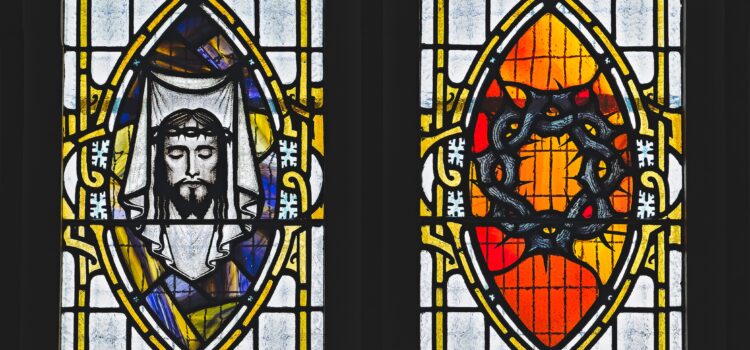

This article is an excerpt from the Shortform summary of "The Case for Christ" by Lee Strobel. Shortform has the world's best summaries of books you should be reading.
Like this article? Sign up for a free trial here .
Is there any evidence of resurrection in the Bible? How doee we know that Jesus was really resurrected?
Evidence of resurrection comes from a few key sources. In fact, there are also witnesses that provide evidence of resurrection. In The Case for Christ, Lee Strobel talks to scholars and researchers to find more evidence.
Keep reading to find out more about evidence of resurrection.
Is There Circumstantial Evidence of Resurrection?
Through his discussions with Drs. Craig and Habermas, Strobel has grounded both the empty tomb and Jesus’s subsequent appearance in solid evidence—which is to say, he’s grounded the Resurrection in evidence.
But let’s say for the sake of argument that the accounts in the gospels and in Acts and Corinthians aren’t true. Is there circumstantial evidence—that is, evidence ancillary to the various narratives of the Resurrection themselves—that supports the truth of the Resurrection? Is there proof of the resurrection of Christ?
To answer this question, Strobel visits J.P. Moreland, a professor at the Talbot School of Theology. A chemist and philosopher by training, Moreland has published widely in scholarly journals on topics in theology and philosophy, and he’s written a number of books, including Christianity and the Nature of Science, The Life and Death Debate, and Love Your God with All Your Mind.
Five Pieces of Circumstantial Evidence
What are the facts—either historically or canonically grounded beyond a reasonable doubt—that prove the Resurrection happened as it did? Is there proof of the resurrection of Christ? Here are five pieces of evidence of resurrection.
Piece #1: The Disciples’ Martyrdom
The skeptic’s argument that the Resurrection was a hoax entails an extraordinary ramification: that Jesus’s disciples would risk incredible emotional and physical suffering—even death—for the sake of a fabrication.
Imagine a magician who makes a priceless piece of art disappear. The magician is then arrested for robbery, tried in court, and sentenced to 50 years in prison. Would he endure his sentence for the sake of a silly magic trick? Doubtful. He’d reveal that the artwork’s disappearance was simply an illusion; he’d return the piece and be set free.
If Jesus’s Resurrection was a hoax, the disciples could have acted similarly: They could have renounced their beliefs the minute they were persecuted and consequently been spared. But they didn’t.
Piece #2: The Skeptics’ Conversion
A powerful rejoinder to the notion that the Resurrection was a conspiracy cooked up by Jesus’s followers is the fact that Jesus’s skeptics saw him, too.
In the gospels, we learn that Jesus’s family, including his brother James, were embarrassed by him. But through Josephus, the first-century historian, we learn that Jesus’s brother James later became a leader of the Jerusalem church and was executed for his faith. And Paul, who, as Saul of Tarsus, was known even to execute Christians himself, later became one of Jesus’s most devoted disciples and a major contributor to the New Testament.
Their reason for this miraculous 180-degree turn? Seeing Jesus alive after his death on the cross. If they hadn’t truly seen him, the remarkable change in their worldview simply doesn’t make sense.
Piece #3: The Revolution in Jewish Society
At the time of Jesus’s teaching, Jews, as they had been for centuries, were persecuted for their beliefs. Due to this interminable abuse, they’d developed extremely resilient religious traditions, and they clung to them even as they were enslaved, tortured, dispersed, and murdered. They did so because they believed these traditions were given to them by God and held out the promise of glory in the afterlife. Suffice it to say, they wouldn’t relinquish these traditions lightly.
Yet, in the immediate aftermath of Jesus’s crucifixion, some ten thousand Jews suddenly become followers of Jesus. They were so convinced of Jesus’s importance, in fact, that they abandoned a number of the most essential institutions of Judaism, including the ritual sacrifice of animals, the observance of the Sabbath on Saturday, and the worship of God the Father only, without consideration of his Son and the Holy Spirit.
It’s hard to overstate how radical these changes would have been to a first-century Jew. A Jewish person renouncing these rituals would have been risking his or her friends, family, and soul. The fact is, Jewish converts to Christianity would only change their lives so drastically if they had been inspired to do so by something truly extraordinary: the Resurrection. But what is the proof of the resurrection of Christ?
Piece #4: The Unique Character of Christian Rituals
The sheer fact that early Christianity adopted the practices of communion and baptism isn’t especially noteworthy—any religion has its own rituals that distinguish it from other religions. But is this evidence of resurrection?
What is significant about communion and baptism is their meaning. Communion, for example, is a commemoration of Jesus’s grisly death (imagine devotees of Martin Luther King Jr. coming together to celebrate his assassination). Why would Jesus’s early followers devote a happy ritual to his abject suffering and death? Because they recognized that he’d died for them, and then rose again.
As for baptism, early Christians modified it from a Jewish form of baptism. In the Christian version, converts were submerged in water to signify Jesus’s death and brought to the surface to signify Jesus’s rise. Like Communion, this ritual was developed explicitly in response to the Resurrection.
Piece #5: Christianity’s Incredible Growth
It is a historical fact that Christianity spread at an unbelievable rate. After a mere twenty years, the religion had arrived in Rome, and it wasn’t long before it spread more widely (and eventually outlasted) the Roman Empire and its religion entirely. Now, devotees of Paganism are vanishingly rare, whereas one can find robust communities of Christians almost anywhere on Earth. How does one explain the incredible growth and resilience of this ancient religion, begun by the destitute followers of a humble carpenter? Secular historians are at pains to explain the phenomenon, but the best answer seems the most obvious one: that people were compelled to become Christians by the evidence of Resurrection.
Now that you have an understanding of the proof of the resurrection of Christ, you can learn more about whether or not Jesus was real.

———End of Preview———
Like what you just read? Read the rest of the world's best summary of Lee Strobel's "The Case for Christ" at Shortform .
Here's what you'll find in our full The Case for Christ summary :
- How an atheist lawyer-journalist researched Christ and began believing
- The key arguments against the existence of Christ, and why they don't hold up
- How to make up your own mind about whether Christ existed







How can evangelical scholars and apologists believe that they can be objective evaluating the historical evidence for the Resurrection when they believe that they can perceive the presence of the resurrected Jesus living within them? Evangelicals may love to discuss the inner presence of Christ among themselves, but not with skeptics. Not at all!
There is one question that evangelical apologists dread to be asked when debating a skeptic: “Do you perceive the presence of the resurrected Jesus within you?”
https://lutherwasnotbornagaincom.wordpress.com/2023/02/19/50-evangelical-apologists-were-asked-do-you-perceive-the-inner-presence-of-jesus-none-responded/